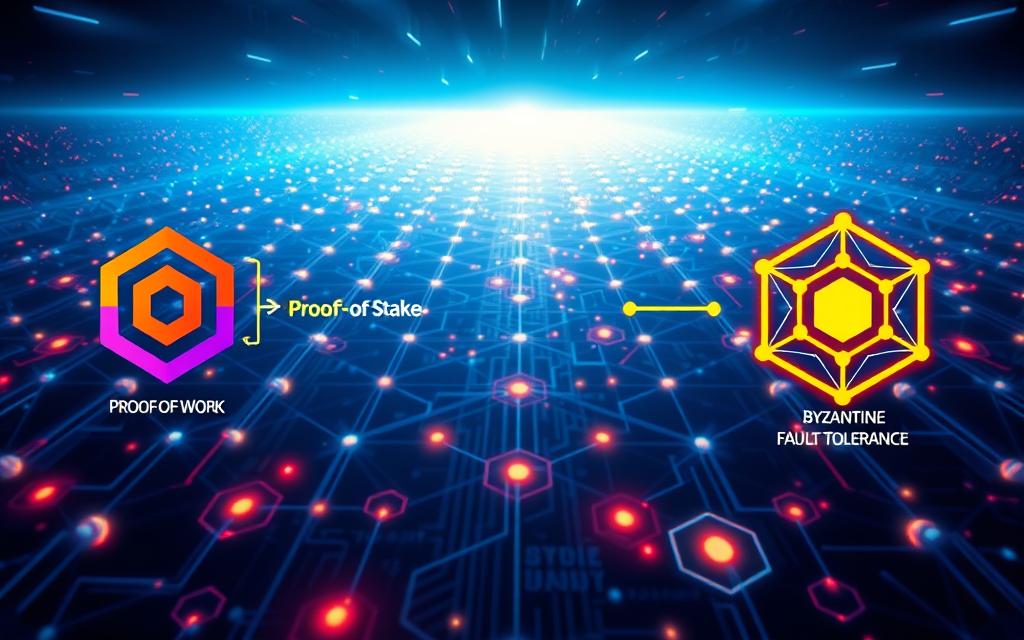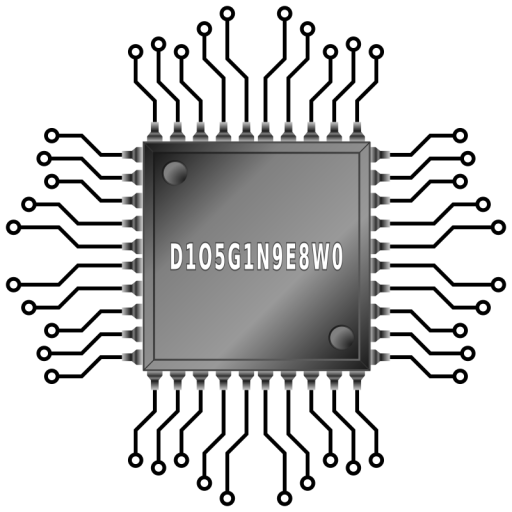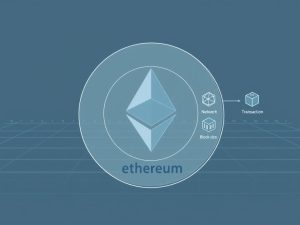Transaction speed has become a make-or-break factor for blockchain networks. While traditional systems like Visa handle 1,700 transactions per second (TPS), many cryptocurrencies struggle to match this pace.
Bitcoin processes just 7 TPS, and Ethereum manages 25 TPS. These numbers pale compared to modern solutions like Solana, clocking 65,000 TPS. Such differences directly impact real-world use cases.
Faster networks enable seamless e-commerce, efficient DeFi platforms, and instant cross-border payments. But raw speed isn’t everything – security and decentralization matter too.
This exploration examines how leading blockchain networks balance these competing demands. We’ll analyze technical architectures, consensus mechanisms, and real-world performance metrics.
Which Is the Fastest Cryptocurrency? Breaking Down Transaction Speeds
Solana dominates the speed race with 65,000 transactions per second, leaving competitors far behind. Hedera Hashgraph follows at 10,000 TPS, while Polygon and Ripple handle 7,000 and 1,500 TPS respectively. Bitcoin’s 7 TPS pales in comparison, taking ~10 minutes per confirmation.
https://www.youtube.com/watch?v=R8-fpVdbOp8
Real-world performance often differs from theoretical limits. Solana’s architecture supports 710,000 TPS in labs but achieves 65,000 in practice. Network congestion, node synchronization, and security checks create gaps between potential and actual throughput.
Nano showcases lightning-fast confirmations at 0.14 seconds—ideal for microtransactions. Meanwhile, Bitcoin’s Proof-of-Work model struggles with scalability, prioritizing decentralization over speed.
Enterprise adoption highlights practical use cases. Ripple’s XRP powers cross-border payments for banks, settling in 3–5 seconds. Hedera Hashgraph secures supply chains with its high-throughput hashgraph consensus, blending speed with auditability.
Layer 2 solutions like Polygon boost Ethereum’s 25 TPS by offloading transactions to sidechains. This hybrid approach balances security with scalability, addressing the blockchain trilemma.
Niche players excel in specific areas. Stellar optimizes for remittances, while Avalanche offers sub-second finality for DeFi apps. Each platform tailors its architecture to unique demands.
What Makes a Cryptocurrency Fast? Key Factors Explained
Blockchain speed depends on multiple technical factors working in harmony. Transaction speed hinges on consensus models, block design, and scalability solutions. Networks like Solana and Hedera optimize these elements to outperform older systems.

Consensus Mechanisms and Their Impact
How a network validates transactions defines its speed. Traditional Proof-of-Work (PoW), used by Bitcoin, slows throughput with complex computations. Modern alternatives prioritize efficiency:
| Consensus Type | Example | TPS Capacity |
|---|---|---|
| Proof-of-Stake (PoS) | Cardano | 1,000 |
| Delegated PoS (DPoS) | EOS | 4,000 |
| Proof-of-History (PoH) | Solana | 65,000 |
| Hashgraph | Hedera | 10,000 |
Solana’s Proof-of-History timestamps transactions before validation, enabling parallel processing. Hedera’s hashgraph uses asynchronous Byzantine Fault Tolerance for rapid, secure consensus without miners.
Network Scalability and Block Size
Larger blocks store more transactions but risk centralization. Bitcoin’s 1MB blocks limit throughput, while Bitcoin Cash’s 32MB blocks boost capacity. Layer 2 solutions like Polygon’s rollups sidestep these tradeoffs by processing transactions off-chain.
Sharding, used by Zilliqa, splits the network into smaller partitions. Each shard handles transactions independently, multiplying total throughput. However, cross-shard communication adds complexity.
Ultimately, speed requires balancing three factors:
- Decentralization (node distribution)
- Security (attack resistance)
- Scalability (throughput capacity)
Solana (SOL): The Speed Leader with 65,000 TPS
Solana’s architecture redefines blockchain performance with unmatched transaction speeds. The network processes 65,000 transactions per second (TPS) with 400ms block times, making it one fastest platforms for digital assets.
This high transaction capacity stems from unique consensus mechanisms:
- Tower BFT: A modified Proof-of-Stake system using Proof-of-History timestamps
- Gulf Stream: Pushes transactions to validators before previous blocks finalize
- Sealevel: Parallel smart contract execution engine
Validator requirements ensure network security:
| Requirement | Specification |
|---|---|
| Minimum Stake | 1 SOL |
| Hardware | 12-core CPU, 128GB RAM, 1TB SSD |
| Connection | 1 Gbps bandwidth |
Real-world performance shows occasional congestion during high transaction periods like NFT drops. The September 2021 outage revealed scaling challenges during 400,000 TPS spikes.
Energy efficiency sets Solana apart:
- 0.0005 kWh per transaction
- 99.9% less energy than Bitcoin
- Carbon-neutral operations since 2021
Major ecosystem projects demonstrate practical utility:
- Serum DEX: Lightning-fast decentralized exchange
- STEPN: Move-to-earn app with instant rewards
- Magic Eden: Leading NFT marketplace
SOL tokenomics balance inflation (8% annual) with fee burns. Transaction fees average $0.00025, enabling microtransactions impossible on other chains.
For developers, Solana offers:
- Rust programming support
- Web3.js libraries
- On-chain program upgrades
As the fastest blockchain supporting 2,500+ dApps, Solana pushes decentralized technology toward mainstream adoption.
Ripple (XRP): Built for Instant Cross-Border Payments
Banks worldwide are adopting RippleNet to slash international transfer times from days to seconds. This network processes payments in 3-5 seconds compared to traditional systems requiring 3-5 days. Over 300 financial institutions now leverage its high transaction speeds of 1,500 transactions per second.

- xCurrent: Real-time messaging between banks
- xRapid: XRP-powered liquidity for emerging markets
- xVia: Standardized payment interfaces
XRP serves as a bridge currency in liquidity corridors. It converts between fiat pairs instantly, eliminating nostro accounts. This system reduces operational costs by up to 60% for participating banks.
The blockchain operates through 35+ trusted validators including Microsoft and MIT. This selective node approach enables faster consensus than public networks. However, the SEC lawsuit questions whether this structure meets decentralization standards.
Cost advantages are staggering:
| Method | Cost per Transaction |
|---|---|
| Traditional Wire | $50 |
| XRP Transfer | $0.0002 |
Major adopters demonstrate real-world utility:
- Santander’s One Pay FX processes same-day international payments
- SBI Remit handles Japan-Thailand corridors
- Bank of America pilots internal settlements
Ripple’s CBDC partnerships with Bhutan and Palau showcase future potential. The escrow-controlled release of 45 billion XRP prevents market flooding. Monthly unlocks of 1 billion tokens maintain predictable supply dynamics.
This speed and efficiency come from optimized ledger design. Transactions clear in seconds without mining delays. The interledger protocol connects disparate financial systems seamlessly.
Hedera Hashgraph (HBAR): Enterprise-Grade Speed and Security
Enterprise blockchain solutions demand both speed and reliability, a combination Hedera Hashgraph delivers exceptionally well. This blockchain platform processes 10,000 transactions per second with 3-5 second finality, outperforming traditional financial systems.

The network achieves this through its patented gossip-about-gossip protocol. Nodes share transaction data efficiently, creating a directed acyclic graph (DAG) instead of linear blocks. This design enables parallel processing of high transaction volumes.
Security remains uncompromised with asynchronous Byzantine Fault Tolerance (aBFT). The system guarantees:
- Malicious actor resistance
- Transaction finality within seconds
- No risk of forks or double-spending
Major enterprises leverage Hedera’s capabilities:
| Use Case | Organization |
|---|---|
| Coupon fraud prevention | The Coupon Bureau |
| IT workflow automation | ServiceNow |
| Supply chain tracking | Boeing |
A 39-member Governing Council ensures decentralized control. Members like Google and IBM serve maximum 3-year terms, preventing centralized influence. This governance model balances stability with innovation.
HBAR tokenomics feature:
- Fixed 50 billion supply
- Staggered release schedule
- $0.0001 average transaction fee
The platform maintains carbon-negative operations through verified offsets. Developers access robust toolkits including Java and JavaScript SDKs for building enterprise solutions.
Compared to permissioned alternatives like Hyperledger, Hedera offers public verifiability without sacrificing security. This makes it ideal for cross-industry collaborations requiring auditability.
Polygon (MATIC): Ethereum’s Scalable Sidechain
Polygon transforms Ethereum’s capabilities by boosting throughput to 7,000 transactions per second—a 466x improvement over Ethereum’s 15 TPS. This blockchain platform now powers 53,000+ decentralized apps, from DeFi giants like Aave to NFT marketplaces such as OpenSea.
The network achieves this through its unique Commit Chain design. Validators bundle transactions using Proof-of-Stake consensus, then anchor checkpoints to Ethereum for security. This hybrid approach delivers low transaction fees averaging $0.01 while maintaining Ethereum-level trust.
Three Layer 2 solutions address different needs:
| Solution | Throughput | Use Case |
|---|---|---|
| zk-Rollups | 2,000 TPS | Private transactions |
| Optimistic Rollups | 1,000 TPS | General dApps |
| Plasma Chains | 5,000+ TPS | High-volume gaming |
Major projects showcase Polygon’s versatility:
- QuickSwap: Processes $50M+ daily volume with sub-second trades
- The Sandbox: Hosts 500,000+ virtual land parcels
- Starbucks Odyssey: Mints 200,000+ NFT rewards monthly
For developers, Polygon offers full EVM compatibility through zkEVM. This allows seamless migration of Ethereum smart contracts with bytecode-level equivalence. The platform also provides:
- JavaScript and Python SDKs
- One-click deployment tools
- Gasless transaction options
Security remains robust with $2B+ in total value locked (TVL) and a $2M bug bounty program. Only 9 validators have been slashed since launch, maintaining 99.9% uptime.
Upcoming Polygon 2.0 upgrades will unify liquidity across chains using POL tokens. The new architecture promises:
- Infinite scalability via ZK-powered L2 chains
- Shared security pools
- Cross-chain messaging
With Disney and Adobe joining its accelerator program, Polygon continues bridging enterprise needs with blockchain innovation. Average fees stay under $0.02, making it accessible for micropayments and mass adoption.
Emerging Contenders: Avalanche, Algorand, and More
Next-generation blockchain networks are pushing transaction speeds beyond traditional limits. While Solana and Hedera dominate speed benchmarks, newer platforms offer specialized architectures for different use cases. Avalanche and Algorand lead this innovation wave with unique approaches to scalability.

Avalanche (AVAX): Sub-Second Finality
Avalanche delivers 4,500 transactions per second with industry-leading 1-second finality. Its triple-chain architecture divides workloads across specialized components:
- X-Chain: Handles asset creation and transfers
- P-Chain: Coordinates validators and subnets
- C-Chain: Executes Ethereum-compatible smart contracts
Subnet functionality enables custom blockchain networks like DeFi Kingdoms and Dexalot. These specialized chains share security while optimizing for specific applications. AVAX tokenomics maintain scarcity with a 720 million cap and deflationary burn mechanism.
Algorand (ALGO): Pure Proof-of-Stake Efficiency
Algorand achieves 1,000 transactions per second through its Pure Proof-of-Stake (PPoS) system. A verifiable random function (VRF) selects block proposers fairly while preventing centralization. This approach balances speed with decentralization:
| Feature | Benefit |
|---|---|
| 4.5s finality | Faster than traditional finance |
| Co-chains | Enterprise privacy solutions |
| ISDA support | Institutional derivatives trading |
Both platforms emphasize sustainability through carbon-neutral operations. Avalanche’s subnet model offers customization, while Algorand’s PPoS provides predictable performance. Their high transaction speeds demonstrate how modern consensus mechanisms overcome traditional bottlenecks.
Why Transaction Speed Matters for Adoption
Modern users expect digital payments to settle faster than cash exchanges. Traditional finance set the bar with Visa’s 1,700 transactions per second, while many blockchain networks still struggle to reach triple digits. This gap directly impacts real-world usability.
Consumer tolerance for delays has evaporated. Nano’s 0.14-second confirmations meet instant payment expectations, while Bitcoin’s 10-minute waits frustrate retail adoption. Slow networks create openings for:
- Front-running bots exploiting DeFi trades
- Abandoned carts during NFT drops
- Failed arbitrage opportunities
The economic toll is staggering. Ethereum users wasted over $300M on failed transactions during peak congestion. High costs and delays push mainstream users toward centralized alternatives.
| Use Case | Required Speed | Current Leaders |
|---|---|---|
| Retail Payments | 500+ TPS | Solana, Ripple |
| GameFi Assets | 1,000+ TPS | Polygon, Avalanche |
| High-Frequency Trading | 10,000+ TPS | Hedera, Fantom |
Regulatory pressures add urgency. FATF’s Travel Rule requires identifying payment parties within seconds—impossible on slow chains. Enterprises need audit trails faster than Bitcoin’s 60-minute confirmation targets.
Layer 2 solutions show promising adoption curves. Polygon’s 7,000 TPS sidechain now processes more transactions than Ethereum mainnet. This demonstrates user preference for responsive networks.
Future applications demand unprecedented throughput. Metaverse environments may require 100,000+ TPS to handle virtual asset exchanges. Current leaders like Solana and Avalanche are building architectures to meet these needs.
Speed alone isn’t enough—finality matters equally. Networks like Algorand achieve irreversible settlements in 4.5 seconds, matching traditional finance speeds while maintaining decentralization.
Conclusion: Balancing Speed, Security, and Utility
No single platform solves the blockchain trilemma perfectly—each excels in specific areas. Ripple streamlines cross-border transactions for banks, while Hedera delivers enterprise-grade security. Solana’s raw speed comes with trade-offs in decentralization.
Developers should match ecosystems to project needs. Financial apps thrive on Ripple’s network, whereas DeFi requires Ethereum’s Layer 2 solutions. Investors must scrutinize actual usage, not just theoretical TPS claims.
Hybrid approaches like Proto-Danksharding show promise. These blend base-layer security with scalable throughput. Diversification across capability tiers remains the wisest strategy for long-term growth.
FAQ
What determines transaction speed in blockchain networks?
How does Solana achieve 65,000 transactions per second?
Why is Ripple (XRP) considered fast for payments?
Can Ethereum match Solana’s transaction speeds?
What advantages does Hedera Hashgraph offer over traditional blockchains?
How do transaction fees relate to speed on different platforms?
FAQ
What determines transaction speed in blockchain networks?
Key factors include consensus mechanisms, block size, and network scalability. Proof-of-Stake systems like Solana enable faster processing than traditional Proof-of-Work chains.
How does Solana achieve 65,000 transactions per second?
Solana combines Proof-of-History with parallel processing, allowing high throughput without compromising decentralization. Its unique architecture minimizes delays in block validation.
Why is Ripple (XRP) considered fast for payments?
Ripple’s consensus protocol settles cross-border transactions in 3-5 seconds with low fees. Banks and financial institutions use it for real-time international transfers.
Can Ethereum match Solana’s transaction speeds?
Ethereum currently processes 15-30 TPS, but layer-2 solutions like Polygon boost throughput to 7,000+ TPS while maintaining security through Ethereum’s base layer.
What advantages does Hedera Hashgraph offer over traditional blockchains?
Hedera uses hashgraph consensus for 10,000+ TPS with enterprise-grade security. Its asynchronous Byzantine Fault Tolerance prevents downtime during network issues.
How do transaction fees relate to speed on different platforms?
Faster networks typically have lower fees due to efficient processing. Solana averages
FAQ
What determines transaction speed in blockchain networks?
Key factors include consensus mechanisms, block size, and network scalability. Proof-of-Stake systems like Solana enable faster processing than traditional Proof-of-Work chains.
How does Solana achieve 65,000 transactions per second?
Solana combines Proof-of-History with parallel processing, allowing high throughput without compromising decentralization. Its unique architecture minimizes delays in block validation.
Why is Ripple (XRP) considered fast for payments?
Ripple’s consensus protocol settles cross-border transactions in 3-5 seconds with low fees. Banks and financial institutions use it for real-time international transfers.
Can Ethereum match Solana’s transaction speeds?
Ethereum currently processes 15-30 TPS, but layer-2 solutions like Polygon boost throughput to 7,000+ TPS while maintaining security through Ethereum’s base layer.
What advantages does Hedera Hashgraph offer over traditional blockchains?
Hedera uses hashgraph consensus for 10,000+ TPS with enterprise-grade security. Its asynchronous Byzantine Fault Tolerance prevents downtime during network issues.
How do transaction fees relate to speed on different platforms?
Faster networks typically have lower fees due to efficient processing. Solana averages $0.00025 per transaction, while Ethereum layer-1 fees spike during congestion.
Which cryptocurrency is best for daily microtransactions?
Nano offers feeless instant payments, while Litecoin provides reliable 2.5-minute confirmations. For DeFi apps, Polygon provides Ethereum compatibility with faster speeds.
Does faster transaction processing compromise security?
Not necessarily. Networks like Algorand use Pure Proof-of-Stake to maintain security at 1,000+ TPS. The tradeoff often involves higher hardware requirements for validators.
.00025 per transaction, while Ethereum layer-1 fees spike during congestion.
Which cryptocurrency is best for daily microtransactions?
Nano offers feeless instant payments, while Litecoin provides reliable 2.5-minute confirmations. For DeFi apps, Polygon provides Ethereum compatibility with faster speeds.
Does faster transaction processing compromise security?
Not necessarily. Networks like Algorand use Pure Proof-of-Stake to maintain security at 1,000+ TPS. The tradeoff often involves higher hardware requirements for validators.














